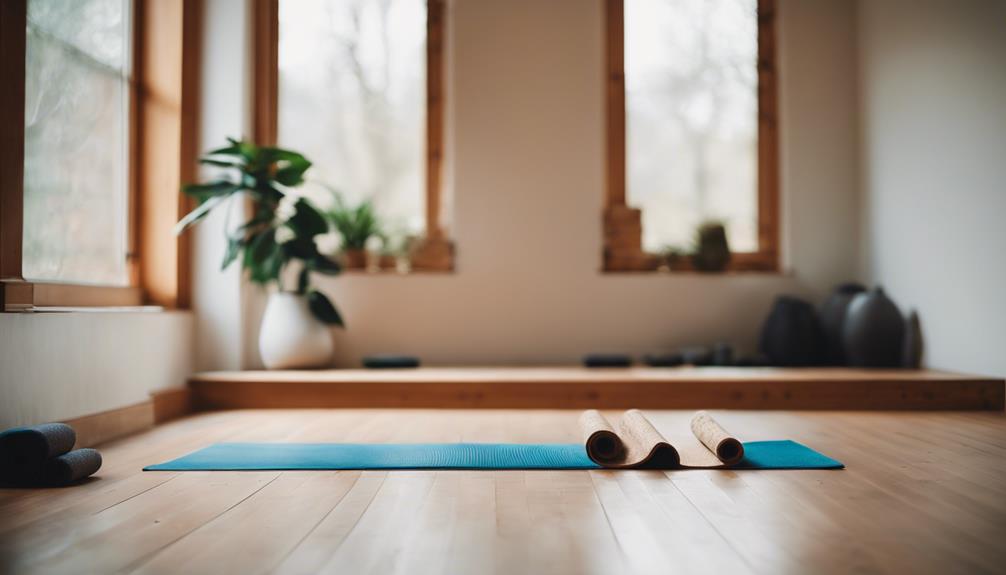Yoga is an ancient practice that originated in India and has gained immense popularity worldwide for its myriad physical, mental, and spiritual benefits. With numerous styles and approaches, yoga caters to a diverse audience, each seeking different outcomes—from increased flexibility and strength to deeper spiritual awareness. Understanding the various types of yoga can help practitioners choose the style that best aligns with their personal goals, preferences, and lifestyles.
In this article, we will explore 20 different types of yoga, each with unique characteristics, techniques, and benefits. From physically demanding practices to more meditative approaches, this guide will provide insights into the diverse world of yoga, aiding you in your journey toward a balanced and healthy life.Is Yoga Good For MobilityYoga Near Me SundayLa Fitness Deerfield Beach Class Schedule
Hatha Yoga: The Foundation of Physical Yoga Styles
Hatha Yoga serves as the cornerstone for many modern yoga practices. It emphasizes the physical aspect of yoga, focusing on postures (asanas) and breathing techniques (pranayama). Hatha classes typically feature a slower pace, allowing practitioners to hold poses for longer periods, making it an excellent choice for beginners. This foundational practice enhances flexibility, strength, and balance while also promoting relaxation and mindfulness.
In Hatha Yoga, the emphasis is on the alignment of the body and breath synchronization. By connecting movement with breath, practitioners cultivate awareness and learn to listen to their bodies. Many other styles of yoga, such as Vinyasa and Ashtanga, have evolved from Hatha Yoga, incorporating its principles in more dynamic or specialized forms.
Vinyasa Yoga: Flowing Through Movement and Breath
Vinyasa Yoga is known for its smooth transitions between postures, creating a dynamic flow that links breath with movement. This style often includes a variety of poses, allowing practitioners to explore their physical limits while fostering a sense of rhythm and fluidity. Vinyasa classes can differ significantly in intensity, with some being quite vigorous and others more gentle, depending on the instructor’s approach.
The beauty of Vinyasa lies in its adaptability; it appeals to various skill levels and personal preferences. As practitioners move through sequences, they cultivate mindfulness and focus, making it a powerful practice for both physical fitness and mental clarity. The continuous flow can also provide a cardiovascular workout, enhancing endurance and strength while promoting relaxation and stress relief.
Ashtanga Yoga: The Eight-Limbed Path to Mastery
Ashtanga Yoga is a rigorous and structured form of yoga that follows a specific sequence of postures. Developed by K. Pattabhi Jois, this style is characterized by its focus on breath and the alignment of body and mind. The practice consists of six series, each progressively more challenging, encouraging practitioners to develop strength, flexibility, and mental focus over time.
The eight limbs of Ashtanga Yoga, derived from the ancient text of the Yoga Sutras, serve as a philosophical framework that guides practitioners beyond physical postures. The practice emphasizes discipline, meditation, and ethical considerations, promoting a holistic approach to personal growth. Ashtanga Yoga is ideal for those seeking a disciplined and intense practice that combines physical challenges with deep spirituality.
Iyengar Yoga: Precision and Alignment in Practice
Iyengar Yoga, developed by B.K.S. Iyengar, is renowned for its focus on precise alignment and the use of props, such as blocks, belts, and blankets, to enhance practice. This style emphasizes the importance of proper alignment in each pose, allowing practitioners to understand their bodies better and safely explore their physical capabilities. Iyengar classes often involve holding poses for extended periods, which helps build strength and flexibility.
The use of props in Iyengar Yoga makes it accessible to people of all ages and fitness levels, allowing practitioners to modify poses to suit their individual needs. This attention to detail not only aids in injury prevention but also fosters a deeper understanding of the postures’ therapeutic benefits. Iyengar Yoga is particularly beneficial for those recovering from injuries or seeking a more mindful approach to their practice.
Bikram Yoga: The Heat and Humidity Experience
Bikram Yoga is a distinctive style practiced in a heated room, typically set to 105°F (40°C) with a humidity level of 40%. Founded by Bikram Choudhury, this rigorous practice consists of a set sequence of 26 postures and two breathing exercises, designed to work every part of the body. The heat allows for deeper stretching, promotes detoxification through sweating, and enhances flexibility and strength.
The challenging environment of Bikram Yoga can be both invigorating and intimidating. While many practitioners appreciate the intense nature of the practice, newcomers should approach it with caution, allowing their bodies to acclimate to the heat. Hydration is crucial, and listening to one’s body is essential to avoid overheating. Bikram Yoga is ideal for individuals who enjoy a physical challenge and seek to push their limits in a supportive, structured setting.
Kundalini Yoga: Awakening Energy Through Spirituality
Kundalini Yoga is often regarded as a spiritual practice that focuses on awakening the kundalini energy believed to be coiled at the base of the spine. This style combines physical postures, breath control, chanting, and meditation, all aimed at promoting self-awareness and spiritual growth. Kundalini practices vary widely and can be both dynamic and meditative, offering a unique blend of physical exertion and spiritual exploration.
The goal of Kundalini Yoga is to awaken this latent energy and elevate consciousness, creating a sense of connection to oneself and the universe. Practitioners often report feelings of heightened awareness and emotional release during and after practice. This style is suitable for those seeking a deeper spiritual experience through yoga, as well as for those interested in exploring the psychological and emotional dimensions of their practice.
Restorative Yoga: Deep Relaxation and Healing Benefits
Restorative Yoga is a gentle, therapeutic style that focuses on relaxation and recovery. Classes typically involve a series of passive poses held for extended periods, supported by props to facilitate comfort and ease. This practice encourages deep relaxation of the body and mind, promoting healing and stress relief. Restorative Yoga is particularly beneficial for individuals dealing with chronic stress, anxiety, or fatigue.
The primary aim of Restorative Yoga is to activate the parasympathetic nervous system, which helps the body return to a state of balance and calm. By providing an opportunity for rest and introspection, this style allows practitioners to reconnect with themselves on a deeper level. Restorative Yoga is accessible to all, making it an excellent choice for those seeking an alternative to more physically demanding practices.
Yin Yoga: A Slow Approach to Deep Stretching
Yin Yoga is a slow-paced style that emphasizes deep stretching and relaxation. Typically, poses are held for several minutes, targeting the connective tissues, such as ligaments and fascia, rather than just the muscles. This approach allows for greater flexibility and encourages the release of tension in both the body and mind. Yin Yoga is often practiced in a meditative manner, inviting practitioners to cultivate mindfulness and presence.
The prolonged hold of poses in Yin Yoga encourages introspection and self-awareness, making it an excellent complement to more vigorous styles of yoga. By focusing on stillness and breathing, practitioners can enhance their ability to manage stress and improve overall well-being. Yin Yoga is suitable for individuals of all levels, particularly those seeking a gentler yet profound practice that encourages relaxation and deep stretching.
Navigating the diverse world of yoga practices can seem overwhelming, but understanding the various styles can help you find the right fit for your personal journey. Each type of yoga offers unique benefits, catering to different physical capabilities, emotional needs, and spiritual aspirations. Whether you seek a vigorous workout, a restorative experience, or a spiritual awakening, there is a yoga practice suited to your goals.
As you explore these 20 types of yoga, consider trying different styles to discover what resonates most with you. Yoga is a personal journey, and the right practice can enhance your physical health, mental clarity, and overall quality of life. Embrace the diversity of yoga, and you may uncover a path that brings harmony to your body, mind, and spirit.


